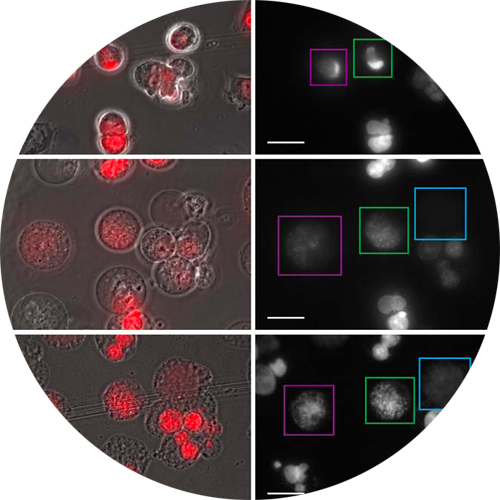Chromosome shattering: a mitotic catastrophe due to chromosome condensation failure
19-Jun-2009
European Biophysics Journal, 2009, 38, 6, 729 - 47 published on 19.06.2009
European Biophysics Journal, online article
European Biophysics Journal, online article
Chromosome shattering has been described as a special form of mitotic catastrophe, which occurs in cells with unrepaired DNA damage. The shattered chromosome phenotype was detected after application of a methanol/acetic acid (MAA) fixation protocol routinely used for the preparation of metaphase spreads. The corresponding phenotype in the living cell and the mechanism leading to this mitotic catastrophe have remained speculative so far. In the present study, we used V79 Chinese hamster cells, stably transfected with histone H2BmRFP for live-cell observations, and induced generalized chromosome shattering (GCS) by the synergistic effect of UV irradiation and caffeine posttreatment. We demonstrate that GCS can be derived from abnormal mitotic cells with a parachute-like chromatin configuration (PALCC) consisting of a bulky chromatin mass and extended chromatin fibers that tether centromeres at a remote, yet normally shaped spindle apparatus. This result hints at a chromosome condensation failure, yielding a “shattered” chromosome complement after MAA fixation. Live mitotic cells with PALCCs proceeded to interphase within a period similar to normal mitotic cells but did not divide. Instead they formed cells with highly abnormal nuclear configurations subject to apoptosis after several hours. We propose a factor depletion model where a limited pool of proteins is involved both in DNA repair and chromatin condensation. Chromosome condensation failure occurs when this pool becomes depleted.











